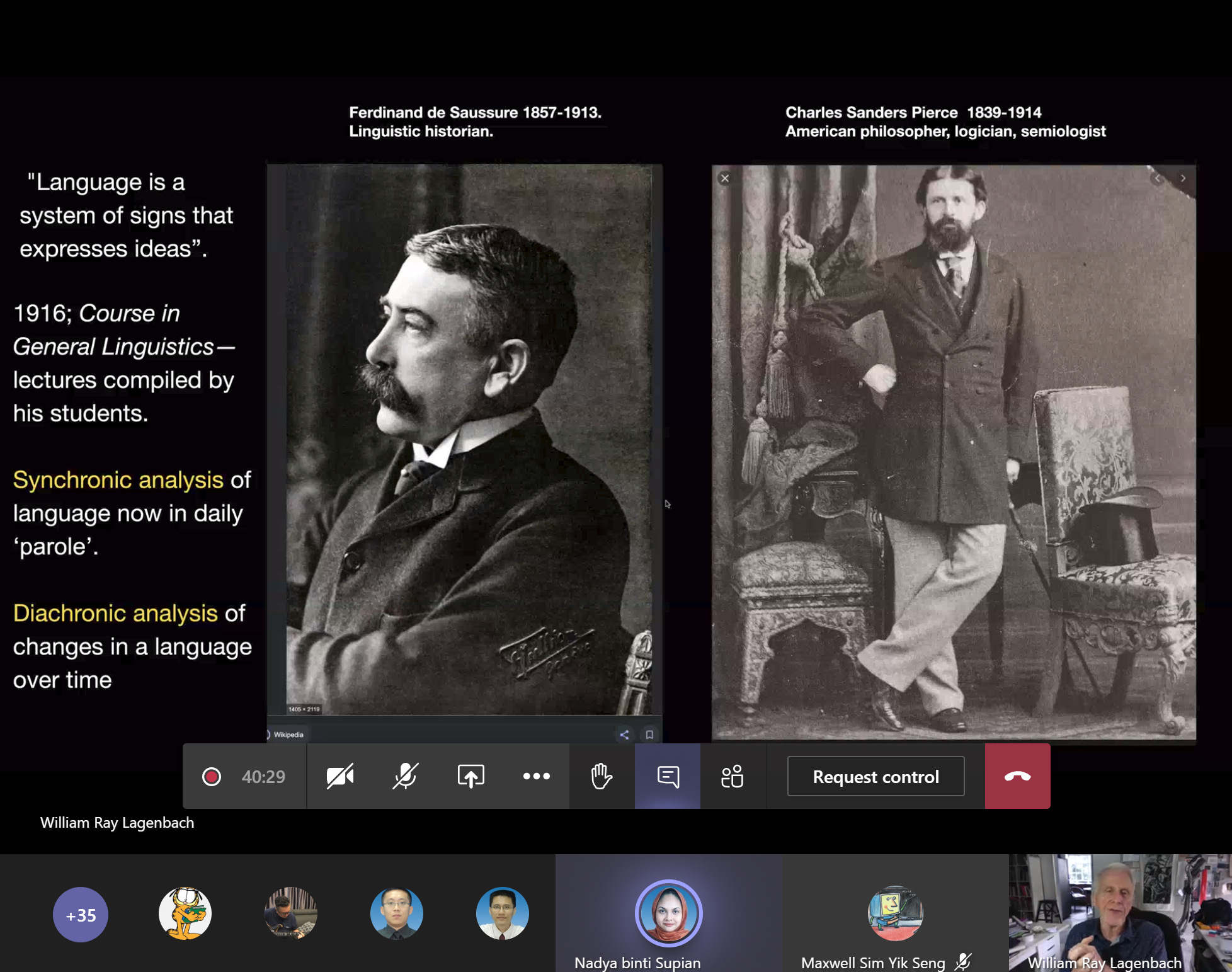

Prof William
speaking on language
The Centre for Modern Languages
and Literature organised a webinar-cum-workshop titled “Signs of the Times:
Semiotics in the time of Covid-19” featuring Faculty of Creative Industries
Prof Dr William Ray Langenbach on 24 June 2020. The webinar, which saw about
60 participants, was conducted using Microsoft Teams.
Semiotics is the study of signs
and how they gather cultural significance and meaning over time. With the
aim to provide participants with a basic working knowledge on semiotics,
Prof William taught the participants on interpreting resonant signs
associated with Covid-19. These signs include images, actions, performances,
words, sounds, speeches, clothing, statistics, expressions, roles, and
mediation of the Covid-19 pandemic here in Malaysia and abroad.
In the webinar, Prof William spoke
about how humans derived meaning from the world around them through the
three categories of sign known as icon, index and symbol. Icons are signs
where the signifier resembles the signified while symbols are signs where
the relation between signifier and signified is purely conventional and
culturally specific. Indexes are signs where the signifier is caused by the
signified.
He said, “Semiotics is the study
of signs. It is both the theory and analysis of signs and signifying
practices. Connotation refers to the feelings, ideas and cultural meanings
which are associated with the word of the object but not the literal meaning
while denotation is the literal or primary meaning of a word in contrast to
the feelings or ideas that the word suggests.”
As he explained the meaning behind
the terms, he also mentioned, “One of the basic principles of semiotics is
that all the terms for things are arbitrary. They are the product of social
conventions. During Covid-19, we have become used to the absence of bodies,
for the purpose of preserving life but the signifier of absence can also be
a violent act of displacement, replacement or elimination. Icons and
indexical photographs record the active erasure of bodies over time. Erasure
is an important signifier as well as a signified because it is both a
visible process, and someone’s desired result.” He added, “Another type of
sign which attempts erasure is hate speech. To understand hate speech, it is
necessary to understand ideological interpretation and performativity.”
He elucidated, “The mask has
become ubiquitous in social life now. Before the medical emergency, they
were associated with covering the face for social, religious purpose, gender
protocols, to protect identity for outlaws and other reason. The mask is
unique as it is not meant to protect the wearer but to protect others from
possible infection by the wearer. Curtailing viral spread depends on the
sense of hive safety rather than individual safety.”
The fundamental lesson of signs is
they are often construed to be that which they represent. We look through
them as if they are open windows into the ‘real’,” said Prof William.
The webinar was followed by a Q&A
session as participants shared their feeling, thoughts and comments.
Wholly owned by UTAR Education Foundation Co. No. 578227-M LEGAL STATEMENT TERM OF USAGE PRIVACY NOTICE